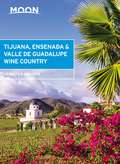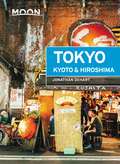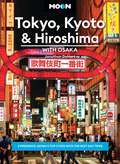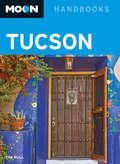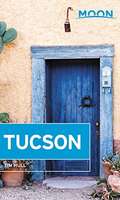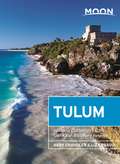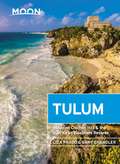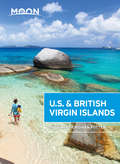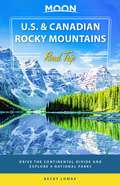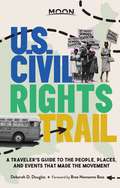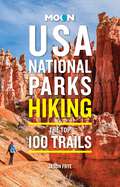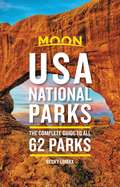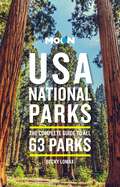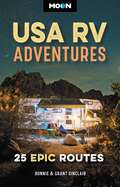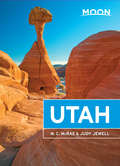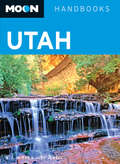- Table View
- List View
Moon Texas: Getaway Ideas, Road Trips, BBQ & Tex-Mex (Travel Guide)
by Andy RhodesGet to know the fiery spirit, Southern hospitality, and larger-than-life personality of the Lone Star State. Inside Moon Texas you'll find:Strategic itineraries, from a Route 66 road trip to quick getaways to the Hill Country, Big Bend National Park, and moreThe top sights and unique activities: Learn the meaning of Texas pride at the Alamo, marvel at the original Mission Control at the NASA Space Center, or explore JFK's legacy at the Sixth Floor Museum in Dallas. Catch a show in the "Live Music Capital of the World," or learn the moves at a honky-tonk in Hill Country. See the striking sunset over the Palo Duro Canyon, stroll along the Padre Island National Seashore, or watch a genuine cowboy herd cattle at a classic Texas ranchThe best local flavors: Dig in to authentic, smoky barbecue, classic Tex-Mex staples, and down-home Southern cookingHonest advice from Austin local Andy Rhodes on when to go, where to stay, and how to get aroundThorough background on the state's culture, history, geography, and regional vernacularFull-color photos and detailed, easy-to-use maps throughoutFocused coverage of Dallas and Fort Worth, Austin and the Hill Country, San Antonio and South Texas, Houston and East Texas, the Gulf Coast, El Paso and West Texas, the Big Bend Region, and the Panhandle PlainsWith Moon Texas' practical tips and local insight, you can plan your trip your way.Exploring more of Texas? Try Moon Austin, San Antonio & The Hill Country or Moon Dallas & Fort Worth. If you're hitting the road, check out Moon Southwest Road Trip.
Moon Thailand
by Suzanne NamJournalist and Bangkok resident Suzanne Nam shares the many ways to experience Thailand, from diving in the clear azure waters off the Andaman coast to exploring 13th-century Buddhist temples in Chiang Mai. Nam offers one-of-a-kind trip strategies-including Touring the Temples and Five Stars at Two-Star Prices-for travelers of all interests and budgets. Complete with expert advice on shopping at Bangkok’s vibrant street markets, island-hopping around Koh Samui, and visiting the country's striking national parks,Moon Thailandgives travelers the tools they need to create a more personal and memorable experience.
Moon Tijuana, Ensenada & Valle de Guadalupe Wine Country (Travel Guide)
by Jennifer KramerIndulge in tacos and beers on the beach, sip your way through a boutique vineyard, and cruise along the stunning Baja coast with Moon Tijuana, Ensenada & Valle de Guadalupe Wine Country. Inside you'll find:Flexible itineraries including a five-day road trip, a weekend in Tijuana, three days in wine country, and a four-day getaway to EnsenadaStrategic advice for road-trippers, foodies, wine enthusiasts, outdoor adventurers, and moreOutdoor adventures and unique experiences: Cruise down Mexico's Highway 1 and feel the warm Baja breeze on your face. Catch a local fútbol game or peruse an art gallery in Tijuana's buzzing Zona Centro. Spot great white sharks off the volcanic shores of Isla Guadalupe, hike to the El Vallecito cave paintings, or trek through canyons to hidden waterfalls. Catch a wave in Rosarito or explore a sunken ship on a diving expedition The best local flavors: Sample varietals from indie winemakers, head to Tecate for Mexico's favorite cerveza, or hit a modern craft brewery for an afternoon tasting. Grab fish tacos, ceviche tostadas, and steamy tamales from a food truck. Indulge in fresh pastries at a 24-hour bakery. Feast on fresh lobster in Puerto Nuevo, enjoy a wood-fired meal at an outdoor campestre restaurant, and try the unique Mediterranean and Asian twists of Baja Med cuisineExpert insight from Baja tour guide Jennifer Kramer on where to go, how to get around, and how to support local businesses Full-color photos and maps throughoutReliable background on the landscape, climate, wildlife, and history, plus health and safety advice and information on border crossingsHandy tools including a Spanish phrasebook and travel tips for families with kids, seniors, travelers with disabilities, and LGBTQ+ travelersExperience the best of Tijuana, Ensenada, and the Valle de Guadalupe Wine Country with Moon.Want más Mexico? Check out Moon Yucatán Peninsula, Moon Oaxaca, or Moon Puerto Vallarta.
Moon Tokyo Walks: See the City Like a Local (Travel Guide)
by Moon Travel Guides<p>Experience Tokyo like a local: on foot! Stroll through the city and soak up its infectious energy, futuristic charm, and centuries of Japanese art and culture with Moon Tokyo Walks.<p> <p>Walk through the city's coolest neighborhoods, including Shibuya, Harajuku, Shinjuku, Ginza, and more, with color-coded stops and turn-by-turn directions<p> <p>Find your scene with top ten lists for restaurants, nightlife, shopping, and more<p> <p>Get to know the real Tokyo on six customizable walks: Savor fresh sushi or delicious ramen, snack on yakitori in a neighborhood izakaya, and barhop through Shibuya. Walk under the famous cherry blossoms in the spring, watch a traditional kabuki performance, and make your way through a bustling morning fish market. Enter the imaginative world of master animator Hayao Miyazaki or marvel at historic temples and Buddhist monuments<p> <p>Explore on the go with foldout maps of each walking route and a removable full-city map, all in a handy guide that fits in your pocket Discover public transportation options like bike rentals, subway lines, and more<p> <p>With creative routes, public transit options, and a full-city map, you can explore Tokyo at your own pace, without missing a beat.<p>
Moon Tokyo, Kyoto & Hiroshima
by Jonathan DeHartFrom serene Buddhist temples to the world's busiest intersection, experience the cosmopolitan culture, deeply embedded history, and legendary cuisine of Japan's top cities. Inside Moon Tokyo, Kyoto & Hiroshima you'll find:Flexible itineraries for 1 to 5 days in Tokyo, Kyoto and Hiroshima that can be combined into a longer tripMust-see highlights and unique experiences: Stroll Kyoto's Philosopher's Path, learn about Hiroshima's history at the Peace Park, and marvel at the towering bronze Buddha in Nara's Toda-ji temple. Get a taste of Tokyo's epic nightlife, stay in a traditional ryokan, or soak up views of Mount FujiThe best local flavors: Indulge in a beautiful, multi-course kaiseiki, and feast on fresh sushi or savory ramen. Make your way through the largest fish market in Toyko, sample sake, and get acquainted with Japanese whiskeys at a tasting roomIdeas for side trips from each city, including Yokohama, Nara, and KobeExpert insight from American expat and longtime Tokyo local Jonathan DeHartFull-color photos and detailed maps throughoutBackground information on the landscape, history, and conduct and cultural customs of each cityHelpful resources on Covid-19 and traveling to JapanHandy tools such as visa information, train travel tips, a Japanese phrasebook, and recommendations for seniors, LGBTQ+ travelers, travelers of color, families with children, and moreExperience the best of these three cities at your own pace with Moon Tokyo, Kyoto & Hiroshima.Spending more time exploring the whole country? Grab a copy of Moon Japan. Just hanging out in Tokyo? Check out Moon Tokyo Walks. About Moon Travel Guides: Moon was founded in 1973 to empower independent, active, and conscious travel. We prioritize local businesses, outdoor recreation, and traveling strategically and sustainably. Moon Travel Guides are written by local, expert authors with great stories to tell—and they can't wait to share their favorite places with you.For more inspiration, follow @moonguides on social media.
Moon Tokyo, Kyoto & Hiroshima: Experience Japan's Top Cities with the Best Day Trips (Moon Asia & Pacific Travel Guide)
by Moon Travel Guides Jonathan DeHartTokyo local Jonathan DeHart shares his expertise on the cosmopolitan culture, deeply embedded history, and legendary cuisine of Japan's top cities. From serene Buddhist temples to the world's busiest intersection, within Moon Tokyo, Kyoto & Hiroshima: With Osaka you'll find:Flexible itineraries for 1 to 5 days in Tokyo, Kyoto and Hiroshima that can be combined into a longer trip Strategic advice for foodies, history buffs, spiritual seekers, and more Must-see highlights and unique experiences: Stroll Kyoto's Philosopher's Path, learn about Hiroshima's history at the Peace Park, and marvel at the towering bronze Buddha in Nara's Toda-ji temple. Get a taste of Tokyo's epic nightlife, stay in a traditional ryokan, soak up views of Mount Fuji (or try to hike it yourself!) The best local flavors: Indulge in a beautiful, multi-course kaiseiki, and feast on fresh sushi or savory ramen. Make your way through the largest fish market in Toyko, sample sake, and get acquainted with Japanese whiskeys at a tasting room Ideas for side trips from each city, including Yokohama, Nara, Osaka, and Kobe Expert insight from American expat and longtime Tokyo local Jonathan DeHart Full-color photos and detailed maps throughoutBackground information on the landscape, history, and conduct and cultural customs of each city Experience the best of these three cities at your own pace with Moon Tokyo, Kyoto & Hiroshima: With Osaka. Spending more time exploring the whole country? Grab a copy of Moon Japan. Just hanging out in Tokyo? Check out Moon Tokyo Walks.About Moon Travel Guides: Moon was founded in 1973 to empower independent, active, and conscious travel. We prioritize local businesses, outdoor recreation, and traveling strategically and sustainably. Moon Travel Guides are written by local, expert authors with great stories to tell—and they can't wait to share their favorite places with you. For more inspiration, follow @moonguides on social media.
Moon Toronto & Ontario: With Niagara Falls, Ottawa & Georgian Bay (Travel Guide)
by Carolyn B. HellerExperience the creative pulse of the city or catch a thrill in the great outdoors: it's all possible with Moon Toronto & Ontario. Inside you'll find:Flexible, strategic itineraries including three days in Toronto, a Georgian Bay coastal road trip, and a week covering the whole regionThe top sights and unique experiences: Take in dramatic views of Niagara Falls on a helicopter flightseeing tour, watch the Changing of the Guard at Ottawa's Parliament Building, or tread the thrilling Edgewalk 116 stories above Toronto. Dine at farm-to-table restaurants or sip your way through wine country. Gallery-hop through Toronto's world-class art scene or learn about indigenous culture at the Curve Lake First Nations Reserve. Outdoor recreation: Hike a section of the Bruce Trail (Canada's longest hiking route!), pedal along Lake Erie, or canoe through the lakes of Algonquin Provincial Park Scuba dive to deep shipwrecks in Lake Superior, relax on the world's longest freshwater beach, or go skiing, snowboarding, or dog-sledding through powdery snowHonest advice from Carolyn B. Heller, who has spent over a decade living and traveling throughout Canada, on when to go, where to eat, and where to stayFull-color photos and detailed maps throughoutHandy tips for international visitors, seniors, travelers with disabilities, and moreBackground information on the landscape, wildlife, history, and cultureFull coverage of Toronto, Niagara Falls, Lake Erie, Lake Huron, Eastern Ontario, Ottawa, Lake Superior, Georgian Bay, Cottage Country, Algonquin, and the NortheastWith Moon Toronto & Ontario's expert insight and practical tips, you can plan your trip your way.For more Canadian adventures, check out Moon Montréal or Moon Nova Scotia, New Brunswick, & Prince Edward Island.
Moon Township
by Mark BertonAs one of the seven original townships of Allegheny County, Moon Township has a long and rich history. From the humble home of Joshua, John, and Jacob Meek in what is now Crescent Township to the Stoops House, owned by 19th-century riverboat captain William Stoops, today's Moon Township is a byproduct of these modest roots. Formed in 1788, Moon Township's history crosses borders into neighboring Findlay and Crescent Townships, which once comprised Moon. Today Moon Township is recognized as one of the most bustling and vibrant communities in the suburbs of Pittsburgh. Home to portions of Pittsburgh International Airport, a growing commercial corridor, and hundreds of new families each year, Moon Township is a major player in the future of western Pennsylvania. Through vintage photographs, Moon Township chronicles how this area has changed with the times while preserving as much of its history as possible.
Moon Tucson
by Tim HullFreelancer and Tucson resident Tim Hull shares his advice on the best Tucson has to offer-from the Tucson Mountains and Rincon Valley to Adobe architecture and desert dude ranches. Hull provides unique trip ideas for a variety of travelers, including Sonoran Desert Adventures and The Three-Day Best of the Old Pueblo. With expert advice on where to sleep, sightsee, and savor the best Southwestern cooking, Moon Tucson gives travelers the tools they need to create a more personal and memorable experience.This ebook and its features are best experienced on iOS or Android devices and the Kindle Fire.
Moon Tucson (Travel Guide)
by Tim HullSee Tucson with a Local!Experience the laid-back atmosphere and vibrant culture of this artsy desert enclave with Tucson local Tim Hull.What you'll find in Moon Tucson:Strategic, flexible itineraries that can be adapted for your schedule, including: "The Best of Old Pueblo in Three Days," "Sonoran Desert Adventures," "Midtown Biking," and "Southwest Style"Full-color, vibrant photos and detailed maps Honest advice on when to go, where to stay, how to get there, and how to get aroundThe top sights and unique activities: Visit remnants of ancient cultures, or explore vestiges of the Old West's legendary conquistadores, cowboys, and outlaws. Browse galleries of Pueblo art, hit an eclectic fusion restaurant, and shop for one-of-a-kind Native American crafts. Find the best resorts for golfing or a spa day, taste phenomenal Mexican food, and discover the top spots to sample the local nightlifeDetailed coverage of restaurants, shops, and nightlifeExpert insight from Tucson local Tim HullSuggestions for excursions outside of the city, including Kartchner Caverns and the Huachuca Mountains, Bisbee and Tombstone, the Border Region, and Willcox and the Chiricahua Mountains Thorough information, including background on the landscape, plants and animals, climate, and local cultureWith Moon Tucson's curated advice, myriad activities, and local insight, you can experience the city your way.Exploring more of the Southwest? Try Moon Arizona & the Grand Canyon or Moon Santa Fe, Taos & Albuquerque. Hitting the road? Try Moon Southwest Road Trip.
Moon Tulum: Including Chichén Itzá & the Sian Ka'an Biosphere Reserve
by Gary Chandler Liza PradoJoin world travelers and travel-writing couple Gary Chandler and Liza Prado for an unforgettable experience. With unique perspective and advice you can trust, Moon Tulum has everything you need to know to have a more personal and memorable experience.With its idyllic beaches and rustic cabañas overlooking the turquoise sea, Moon Tulum tells you what you need to know to plan the perfect trip for you. From the pristine coral reefs and beaches and astounding array of wildlife to the freshest seafood (think ceviche bar) and a perfect beachfront cocktail, Tulum has something for everyone. Along with trip ideas like "A Family Affair" and "Cenote Hopping", Chandler and Prado include tips on experiencing Mayan ruins such as Chichén Itzá, Cobá, and Ek' Balam.With expertly crafted maps and gorgeous photos, this full-color guidebook gives you the tools you need to have an immersive and unique experience.Moon Tulum includes areas such as:TulumCobáSian Ka'an Biosphere ReserveThe Costa MayaLaguna BacalarChetumal and surroundingsChichén ItzáValladolidEk' BalamFind the Moon guide that best suits your trip! Traveling in Mexico for longer? Try Moon Puerto Vallarta, Moon Cancún & Cozumel, or Moon San Miguel de Allende.Considering moving to Mexico full-time? Check out Moon Living Abroad in Mexico.
Moon Tulum: With Chichén Itzá & the Sian Ka'an Biosphere Reserve (Travel Guide)
by Gary Chandler Liza PradoWith idyllic beaches, rustic cabañas, and the turquoise sea, Tulum has all the makings of a perfect getaway. Immerse yourself with Moon Tulum. Inside you'll find:Strategic itineraries for families, honeymooners, history buffs, adventurers, and moreThe top attractions and unique experiences: Wander the ancient ruins of Chichén Itzá or climb the second-highest Maya pyramid at Cobá. Kayak through mangrove forests and snorkel the world's longest underground river system. See parrots, toucans, and even jaguars at the Sian Ka'an Biosphere Reserve, and bike from temple to temple on wide forest paths. Sunbathe by the pool or relax in an oceanfront cabaña with a beachy cocktailThe best spots for sports and recreation, including sailing, fishing, kayaking, mountain biking, kiteboarding, and diving or snorkeling along reefs and in underground cenotesExpert insight from seasoned adventurers Gary Chandler and Liz Prado on when to go, how to get around, and where to stay, from charming seaside hotels to eco-friendly bungalowsDetailed maps and full-color photos throughoutThorough information on the landscape, climate, wildlife, and local cultureFull coverage of Tulum, Cobá, the Costa Maya, Laguna Bacalar, Ek'Balam, Chetumal, the Sian Ka'an Biosphere Reserve, and Chichén ItzáWith Moon Tulum's practical tips and local insight, you can plan your trip your way.Expanding your trip? Check out Moon Yucatán Peninsula, or Moon Belize.
Moon U.S. & British Virgin Islands (Moon Handbooks)
by Susanna Henighan PotterThis full-color guidebook includes vibrant photos and easy-to-use maps to help with trip planning.Virgin Islands resident Susanna Henighan Potter offers firsthand knowledge of everything this paradise has to offer, from St. Croix to St. Thomas and Tortola. Potter guides readers to the most thrilling hikes in St. John's Virgin Islands National Park, the best snorkeling spots in Cruz Bay, and the most exciting carnivals and festivals on Virgin Gorda. Including unique trip strategies such as "Family Fun on St. John," "Sunken Ships and Plantations Past," and "Caribbean Life: Authentic St. Croix," Moon U.S. & British Virgin Islands gives travelers the tools they need to create a more personal and memorable experience.
Moon U.S. & Canadian Rocky Mountains Road Trip: Drive the Continental Divide and Explore 9 National Parks (Travel Guide)
by Becky LomaxRugged landscapes, glacier-carved scenery, and lush forests: Every mile along this epic journey presents an opportunity for adventure. Explore the best of the Rockies with Moon U.S. & Canadian Rockies Road Trip.Multiple Routes: Choose a portion of the road trip that covers the Rockies in the US and Canada, or embark on the ultimate three-week route between Calgary and Denver, including Jasper, Banff, Glacier, Yellowstone, and Zion Unbeatable outdoor adventures along the way: Hike through alpine wildflowers, beneath waterfalls, and past snowy peaks and glaciers. Spot wild elk, moose, and bighorn sheep, marvel at Yoho&’s thundering Takkakaw Falls, or paddle over a crystal-clear lake. Soak up views of the Tetons, drive the Going-to-the-Sun Road, or go whitewater rafting. Soak in a natural hot spring, hike to your campsite, and spot the Milky Way before you drift to sleep under the stars Eat, sleep, stop and explore with lists of the best views, restaurants, unique activities, and more: Ride the International over the Alberta-Montana border or stay overnight in the elegant Chateau Lake Louise. Catch the annual Stampede in Calgary, Sundance in Salt Lake City, or the Colorado Shakespeare Festival. Chow down on poutine, Alberta beef, and wild huckleberries, or explore the international food scene in Denver Covers 9 national parks: Jasper, Banff, Yoho, Kootenay, Waterton, Glacier, Yellowstone, Grand Teton, and Rocky Mountain National Park Maps and driving tools: Easy-to-use maps keep you oriented on and off the highway, along with site-to-site mileage, driving times, detailed directions, and full-color photos throughoutExpert advice from former national park guide and author of Moon USA National Parks Becky Lomax Helpful resources on COVID-19 and road-tripping the U.S. and Canadian Rockies Planning your trip: Find when and where to get gas, how to avoid traffic, tips for driving in different road and weather conditions, safety tips, and suggestions for LBGTQ+ travelers, seniors, and road trippers with kids With Moon U.S. & Canadian Rockies Road Trip&’s flexible itineraries and practical tips, you're ready to fill up and hit the road. About Moon Travel Guides: Moon was founded in 1973 to empower independent, active, and conscious travel. We prioritize local businesses, outdoor recreation, and traveling strategically and sustainably. Moon Travel Guides are written by local, expert authors with great stories to tell—and they can't wait to share their favorite places with you. For more inspiration, follow @moonguides on social media.
Moon U.S. Civil Rights Trail: A Traveler's Guide to the People, Places, and Events that Made the Movement (Travel Guide)
by Deborah D. DouglasThe U.S. Civil Rights Trail offers a vivid glimpse into the story of Black America's fight for freedom and equality. From eye-opening landmarks to celebrations of triumph over adversity, experience a tangible piece of history with Moon U.S. Civil Rights Trail.Flexible Itineraries: Travel the entire trail through the South, or take a weekend getaway to Charleston, Birmingham, Jackson, Memphis, Washington DC, and more places significant to the Civil Rights MovementHistoric Civil Rights Sites: Learn about Dr. King's legacy at the Lorraine Motel in Memphis, be transformed at the small but mighty Emmett Till Intrepid Center, and stand tall with Little Rock Nine at their memorial in ArkansasThe Culture of the Movement: Get to know the voices, stories, music, and flavors that shape and celebrate Black America both then and now. Take a seat at a lunch counter where sit-ins took place or dig in to heaping plates of soul food and barbecue. Spend the day at museums that connect our present to the past or spend the night in the birthplace of the bluesExpert Insight: Award-winning journalist Deborah Douglas offers her valuable perspective and knowledge, including suggestions for engaging with local communities by supporting Black-owned businesses and seeking out activist groupsTravel Tools: Find driving directions for exploring the sites on a road trip, tips on where to stay, and full-color photos and maps throughoutDetailed coverage of: Charleston, Atlanta, Selma to Montgomery, Birmingham, Jackson, the Mississippi Delta, Little Rock, Memphis, Nashville, Raleigh, Durham, Virginia, and Washington DCForeword by Bree Newsome Bass: activist, filmmaker, and artist Journey through history, understand struggles past and present, and get inspired to create a better future with Moon U.S. Civil Rights Trail.
Moon USA National Parks Hiking: The Top 100 Trails (Moon Hiking Travel Guide)
by Jason Frye Moon Travel GuidesPick a park, find your trail, and embark on an unforgettable journey in America&’s top national parks with outdoors expert Jason Frye. Inside Moon USA National Parks Hiking you&’ll find:Coverage of 100 hiking trails across 40 national parks, from Acadia to Zion, organized by region Strategic lists and itineraries: Choose from lists of the best day hikes, accessible trails, hikes by season, hikes without crowds, and more, or make your way down the list of the top hiking experiences across the country Detailed hike descriptions and trail maps marked with distance, duration, effort level, and trailheads Outdoor adventures: Spot wildlife in their natural habitat, catch the sunrise, or stargaze. Take a dip in mountain streams, cast your line in a lake, and stop for a photo at stunning waterfalls Comprehensive planning resources: With maps and transportation tips, you&’ll have the tools to explore each park or region individually, or visit multiple for an epic national parks trip Trusted advice from writer and outdoors expert Jason Frye on how to avoid crowds, what time of year to visit, and where to stay inside and outside the parks, from campgrounds to hotels Know before you go: Find essential background on climate, terrain, wildlife, history, and trail safety, plus practical information on park fees, passes, and reservations, including how to obtain and use a National Parks Pass Gorgeous, full-color photos throughout From family-friendly adventures to strenuous mountain climbs, hit the trails with Moon USA National Parks Hiking. For more in-depth information on a specific park, check out one of Moon&’s national parks travel guides.About Moon Travel Guides: Moon was founded in 1973 to empower independent, active, and conscious travel. We prioritize local businesses, outdoor recreation, and traveling strategically and sustainably. Moon Travel Guides are written by local, expert authors with great stories to tell—and they can't wait to share their favorite places with you. For more inspiration, follow @moonguides on social media.
Moon USA National Parks: The Complete Guide to All 59 Parks (Travel Guide)
by Becky LomaxThey've been dubbed America's best idea for a reason: get inspired, get outdoors, and discover the wild beauty of the United States with Moon USA National Parks. Inside you'll find:Coverage of all 59 national parks, from the misty mountains of the east and the redwoods of the west, to the glaciers of Alaska and volcanoes of Hawaii, organized by regionStrategic lists and itineraries: Choose from lists of the best parks for hiking, wildlife, families, and scenic drives, or make your way down the list of the top ten national parks experiences across the countryThe best outdoor adventures in every park, including backpacking, biking, mountain climbing, kayaking, rafting, and more, plus detailed hike descriptions and trail maps marked with distance, duration, effort level, and trailheadsNational parks road trips with driving times and advice for linking multiple parks, interesting stops between them, and nearby attractions and state parksComprehensive planning resources: With detailed maps and transportation tips, you'll have the tools to explore each park or region individually, or visit multiple for an epic national parks tripExpert advice from former park guide Becky Lomax on how to avoid crowds, what time of year to visit, and where to stay inside and outside the parks, from campgrounds to hotelsKnow before you go: Find essential background on climate, terrain, wildlife, history, and safety precautions, plus practical information on park fees, passes, and reservations, including how to obtain and use a National Parks PassGorgeous, full-color photos throughout, plus a handy keepsake section for your national parks stamps and a detachable fold-out poster mapWhether you're trekking to striking vistas, rafting a wild river, or camping under the stars, find your park adventure with Moon USA National Parks.For more in-depth information on a specific park, check out Moon's national parks travel guides.
Moon USA National Parks: The Complete Guide to All 62 Parks (Travel Guide)
by Becky LomaxThey've been dubbed America's best idea for a reason: get inspired, get outdoors, and discover the wild beauty of the United States with Moon USA National Parks. Inside you'll find:Coverage of all 62 national parks, from the misty mountains of the east and the redwoods of the west to the glaciers of Alaska and volcanoes of Hawaii, organized by regionStrategic lists and itineraries: Choose from lists of the best parks for hiking, wildlife, families, and scenic drives or make your way down the list of the top ten national parks experiences across the countryThe best outdoor adventures in every park, including backpacking, biking, climbing, kayaking, rafting, and more, plus detailed hike descriptions and trail maps marked with distance, duration, effort level, and trailheadsNational parks road trips with driving times and advice for linking multiple parks, interesting stops between them, and nearby attractions and state parksComprehensive planning resources: With maps and transportation tips, you'll have the tools to explore each park or region individually, or visit multiple for an epic national parks tripExpert advice from former park guide Becky Lomax on how to avoid crowds, what time of year to visit, and where to stay inside and outside the parks, from campgrounds to hotelsKnow before you go: Find essential background on climate, terrain, wildlife, history, and safety precautions, plus practical information on park fees, passes, and reservations, including how to obtain and use a National Parks PassGorgeous, full-color photos throughout, plus a handy keepsake section for your national parks stamps and a detachable fold-out poster mapWhether you're trekking to striking vistas, rafting a wild river, or camping under the stars, find your park adventure with Moon USA National Parks.For more in-depth information on a specific park, check out one of Moon's national parks travel guides.
Moon USA National Parks: The Complete Guide to All 63 Parks (Moon National Parks Travel Guide)
by Becky Lomax Moon Travel GuidesGet inspired, get outdoors, and discover the wild beauty of the United States with parks expert Becky Lomax. Inside Moon USA National Parks you&’ll find:Coverage of all 63 national parks, from the misty mountains of the east and the redwoods of the west to the glaciers of Alaska and volcanoes of Hawaii, organized by region Strategic lists and itineraries: Choose from lists of the best parks for hiking, wildlife, families, and scenic drives or make your way down the list of the top ten national parks experiences across the country The best outdoor adventures in every park, including backpacking, biking, climbing, kayaking, rafting, and more, plus detailed hike descriptions and trail maps marked with distance, duration, effort level, and trailheads National parks road trips with driving times and advice for linking multiple parks, interesting stops between them, and nearby attractions and state parks Comprehensive planning resources: With maps and transportation tips, you'll have the tools to explore each park or region individually, or visit multiple for an epic national parks trip Expert advice from former park guide Becky Lomax on how to avoid crowds, what time of year to visit, and where to stay inside and outside the parks, from campgrounds to hotels Know before you go: Find essential background on climate, terrain, wildlife, history, and safety precautions, plus practical information on park fees, passes, and reservations, including how to obtain and use a National Parks Pass Gorgeous, full-color photos throughout, plus a handy keepsake section for your national parks stamps and a detachable fold-out poster mapWhether you're trekking to striking vistas, rafting a wild river, or camping under the stars, find your park adventure with Moon USA National Parks. For more in-depth information on a specific park, check out one of Moon's national parks travel guides.About Moon Travel Guides: Moon was founded in 1973 to empower independent, active, and conscious travel. We prioritize local businesses, outdoor recreation, and traveling strategically and sustainably. Moon Travel Guides are written by local, expert authors with great stories to tell—and they can't wait to share their favorite places with you. For more inspiration, follow @moonguides on social media.
Moon USA National Parks: The Complete Guide to All 63 Parks (Travel Guide)
by Becky LomaxThey've been dubbed America's best idea for a reason: get inspired, get outdoors, and discover the wild beauty of the United States with Moon USA National Parks. Inside you'll find:Coverage of all 63 national parks, from the misty mountains of the east and the redwoods of the west to the glaciers of Alaska and volcanoes of Hawaii, organized by region Strategic lists and itineraries: Choose from lists of the best parks for hiking, wildlife, families, and scenic drives or make your way down the list of the top ten national parks experiences across the country The best outdoor adventures in every park, including backpacking, biking, climbing, kayaking, rafting, and more, plus detailed hike descriptions and trail maps marked with distance, duration, effort level, and trailheads National parks road trips with driving times and advice for linking multiple parks, interesting stops between them, and nearby attractions and state parks Comprehensive planning resources: With maps and transportation tips, you'll have the tools to explore each park or region individually, or visit multiple for an epic national parks trip Expert advice from former park guide Becky Lomax on how to avoid crowds, what time of year to visit, and where to stay inside and outside the parks, from campgrounds to hotels Know before you go: Find essential background on climate, terrain, wildlife, history, and safety precautions, plus practical information on park fees, passes, and reservations, including how to obtain and use a National Parks Pass Gorgeous, full-color photos throughout, plus a handy keepsake section for your national parks stamps and a detachable fold-out poster mapWhether you're trekking to striking vistas, rafting a wild river, or camping under the stars, find your park adventure with Moon USA National Parks. For more in-depth information on a specific park, check out one of Moon's national parks travel guides. About Moon Travel Guides: Moon was founded in 1973 to empower independent, active, and conscious travel. We prioritize local businesses, outdoor recreation, and traveling strategically and sustainably. Moon Travel Guides are written by local, expert authors with great stories to tell—and they can't wait to share their favorite places with you. For more inspiration, follow @moonguides on social media.
Moon USA RV Adventures: 25 Epic Routes (Travel Guide)
by Bonnie Sinclair Grant SinclairGet inspired and get ready to hit the road with the ultimate guide to America's best RV road trips! Inside Moon USA RV Adventures you&’ll find:25 flexible RV trip itineraries: Gear up for any adventure with road trip loops, ideas for side trips, and strategies for linking routes together The best routes for national parks, historic sites, natural wonders, beaches, and pet-friendly destinations Can't-miss stops from coast to coast: Camp on the beach in the Florida Keys, follow the ruts on the historic Oregon Trail, and wildlife-watch in Yellowstone. Hike in Acadia with your four-legged friend, take in the colorful wind-swept vistas of the Badlands, and enjoy mountain-peak views with your morning cup of coffee in Colorado Delicious local flavors: From lobster rolls to Key lime pie to the red and green chiles of the Southwest, taste your way across the country—whether you dine in restaurants or your RV kitchen Expert advice from seasoned RV-ers Bonnie and Grant Sinclair Comprehensive planning resources: Easy-to-use maps that highlight where you can (and can&’t) drive an RV, nearby grocery stores for each campground, plus tips for health and safety on the road, navigating weather conditions, RV-ing with pets, and minimizing your environmental impact along the way Gorgeous, full-color photos and a fold-out mapRV basics and essential tips like how to pack, how to pick campgrounds, types of RVs, renting an RV, and more From scenic drives and epic hikes to tranquil campground stops, make your home on the road with Moon USA RV Adventures. About Moon Travel Guides: Moon was founded in 1973 to empower independent, active, and conscious travel. We prioritize local businesses, outdoor recreation, and traveling strategically and sustainably. Moon Travel Guides are written by local, expert authors with great stories to tell—and they can't wait to share their favorite places with you. For more inspiration, follow @moonguides on social media.
Moon USA State by State: The Best Things to Do in Every State for Your Travel Bucket List (Travel Guide)
by Moon Travel GuidesFrom the Pacific to the Atlantic, through prairies and bayous to snow-capped mountains, uncover the best of the US with Moon USA State by State. Inside you&’ll find: Broken down by region, each chapter introduces the unique personality of all 50 states, Washington DC, and Puerto RicoThe top 3-5 experiences: Whether it&’s a bucket-list national park, a famous festival, or an unbeatable beach, find out what makes each state special Unforgettable outdoor adventures: Explore the best national parks from Acadia to Zion. Peep the changing leaves in Vermont or set up camp for a night of stargazing in Texas. Explore underground caves in Kentucky, or hike to waterfalls in Washington and volcanoes in Hawaii. Admire stunning arches and hoodoos in Utah, or watch for wildlife in AlaskaRoad trip ideas: Hit the road with lists of each state's best scenic drives and must-see roadside stopsLocal flavors from coast to coast: Sample hatch chilis in New Mexico and dig in to heaping plates of hot chicken in Tennessee. Spend a weekend wine-tasting in Oregon, or try a flight of craft beers in Colorado History and fun facts: Get to know more about each state with historical background, lesser-known local favorites, and moreMoon USA State by State: Inspiration, experiences, and adventures from coast to coast. About Moon Travel Guides: Moon was founded in 1973 to empower independent, active, and conscious travel. We prioritize local businesses, outdoor recreation, and traveling strategically and sustainably. Moon Travel Guides are written by local, expert authors with great stories to tell—and they can't wait to share their favorite places with you.For more inspiration, follow @moonguides on social media.
Moon USA Travel Planner, Revised Edition
by Liz Hamill ScottMoon USA Travel Planner is a sampler of top travel destinations in the U.S. Excerpted from Moon’s Handbooks series, this eBook offers information on vacation spots ranging from Washington’s San Juan Islands to Florida’s Gulf Coast. Rather than providing in-depth coverage on just one location, this is a fun-to-browse guide that offers overviews of fifty-two individual cities, states, regions, and national parks and monuments—along with a trip-planning section, suggested itineraries, maps, and photos for each one. With chapters on Napa and Sonoma, Yellowstone, New Mexico, Michigan, Kentucky, New York, Rhode Island, and more, Moon USA Travel Planner gives travelers the tools they need to create a more personal and memorable experience.
Moon Utah (Travel Guide)
by W. C. Mcrae Judy JewellDiscover Utah with Moon Travel Guides!From remote deserts and arid mountain ranges, to colorful canyons and world-famous national parks, Moon Utah reveals the best of this adventurous state.What you'll find in Moon Utah:Strategic itineraries from a weekend getaway to Salt Lake City, to ten days covering the entire state, curated for history buffs, families, outdoor adventurers, budget travelers, and moreDetailed maps and helpful reference photos throughoutHow to plan a national parks road trip covering Zion, Bryce Canyon, Arches, Capitol Reef, and CanyonlandsMust-see attractions and offbeat ideas: Hike or mountain bike across canyons, rugged mountain ranges, and glistening salt flats, or hit the slopes at a Park City ski resort. Admire ancient Native American rock art or cliff dwellings, and walk beside fossilized dinosaur footprints. Explore historic Mormon sites in Salt Lake City, or wander through old mining towns. Go rafting down the Colorado River, canyoneering through the Narrows, or climb to the famed Delicate Arch just in time to watch the sun setting over the captivating hoodoosHonest recommendations from Utah experts and lifelong explorers W.C. McRae and Judy Jewell on when to go, where to eat, and where to stay, from ski resorts to budget motelsAccurate, up-to-date information including the best ways to get around, plus background on the landscape, wildlife, history, and local lawsAdvice for LGBTQ+ travelers, international visitors, seniors, and travelers with disabilitiesWith Moon Utah's myriad activities, practical advice, and local insight on the best things to do and see, you can plan your trip your way.Coverage: Salt Lake City, Park City and the Wasatch Range, Provo and Central Utah, Dinosaur National Monument and vicinity, Zion National Park, Bryce Canyon National Park, the Escalante region (including Grand Staircase-Escalante National Monument and Capitol Reef National Park), Arches National Park, Canyonlands National Park, MoabFocusing on the parks? Try Moon Zion & Bryce or Moon Arches & Canyonlands. Hitting the road? Try Moon Southwest Road Trip.
Moon Utah: 2011
by W. C. Mcrae Judy JewellSeasoned travel writers W. C. McRae and Judy Jewell know the best ways to experience all that the Beehive State has to offer. The authors include great trip strategies that utilize Utah's amazing outdoor attractions and unique history, such as Standing High: The Best Vistas and The Old West Tour. Packed with information on dining, transportation, and accommodations, Moon Utah has lots of options for a range of travel budgets. Every Moon guidebook includes recommendations for must-see sights and many regional, area, and city-centered maps. Including expert advice on the state's best brewpubs, first-rate ski and snowboard resorts, and amazing National Parks, Moon Utah gives travellers the tools they need to create a more personal and memorable experience. With expert writers, first-rate strategic advice, and an essential dose of humour, Moon Handbooks arethe cure for the common trip.


